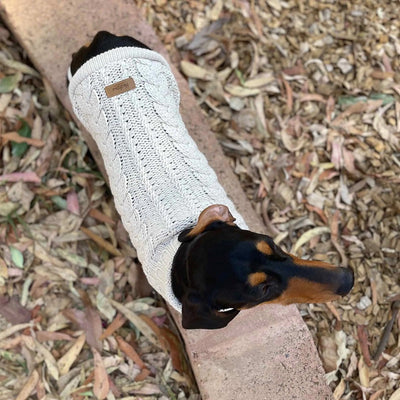One of the greatest health challenges for the human population over the coming decades is an increase in obesity related illnesses. Unfortunately, this is also reflected in the pet population as well.
In 2005, researchers from the School of Veterinary Science at the University of Sydney and the RSPCA Australia undertook research to establish the prevalence of obesity in dogs. The study “Pet obesity in Australian pets Dogs” worked with vet practices throughout the country to determine the risk factors involved and establish the percentage of pets that were overweight or obese.
A questionnaire was sent to a total of 209 practices who were asked to record details of eligible dogs, and the reason why they had been examined during the previous month.
Data regarding weight and obesity was collected in the questionnaire on 2,661 dogs of which 33.5% were overweight and over 7% were classed as obese. As pet owners, we often think that our pets are underweight and yet only 4% of the dogs in this questionnaire were considered thin or underweight.
There is often some myth surrounding why dogs become overweight. These include, whether a dog is desexed, the sex of the dog and some kind hearted observations! Accordingly, we have become so accustom to seeing dogs that are overweight, that we think it is the new normal!
What the data from this study highlighted is that the breed, gender and neutering were all risk factors. Two interesting results of the study were, dogs up to the age of 10 years were more likely to be overweight with rates declining after this age and that dogs living in suburban areas were less at risk than their country cousins living in the semi-rural or even rural areas.
Another study was undertaken by Dr Tanya Grassi, Anne Quain and Cassandra Pride from the Faculty of Veterinary Science, University of Sydney “The incidence of obese and overweight pets in Australia - a preliminary report”.
This study examined whether the number of overweight pets in Australia was consistent with those carried out overseas. Overseas studies found that some 44% of dogs and 40% of cats were considered to be overweight or obese. They also found that overweight pets were more prevalent in single pet households were poorly exercised and had owners who were overweight as well.
Overweight dogs and cats may look cute and were even use friendly phrases like “big boned “or “tubby” to describe them. However, pet owners shouldn’t underestimate the serious health consequences that can be brought on by being overweight.
These include:
- Osteoarthritis
- Hear disease
- Diabetes
- Increased health risk if surgery is required
We love our pets and only have them for a comparatively short time. If your pet is overweight, the facts show clearly that they are likely to have both a shorter life span and poorer quality of life.
Although these studies established some of the underlining risk factors that may make pets obese, in simple terms pets are eating more than their energy levels require.
A mere 5% of the cases of obesity require medical treatment, the remaining 95% are treated with lifestyle changes, that’s exercises and diet!
The good news is solving your pet’s overweight problem is not that hard?
- Start by establishing the correct weight range for your pet. Your vet or our staff can assist with this.
- Switch your pet to a light or weight loss diet
- Reduce the treats, including human food like toast and look for healthy alternatives like dried chicken breast or dried roo.
- Exercise your pet daily, you’ll feel better as well!
- If your dog is from a single pet household, consider going to a leash free park for some extra interaction and energetic play.
- Use a health tracker for your pet
- Weigh your dog fortnightly to check your pets progress (we have scales at the store)
Health trackers for pets are relatively new and are similar to the “Fitbit” technology we use ourselves. They come with a free App that collects information that will tell you when your pet needs to exercise and how much to feed it based on its level of activity throughout the day.
For more information or to have your pet weighed, drop in and see us!
References
The incidence of obese and overweight pets in Australia - a preliminary report Dr Tanya Grassi, Anne Quain and Cassandra Pride. Faculty of Veterinary Science, University of Sydney
Pet Obesity in Australian pets Dogs A 2005 study by researchers from the School of Veterinary Science at the University of Sydney and RSPCA Australia






